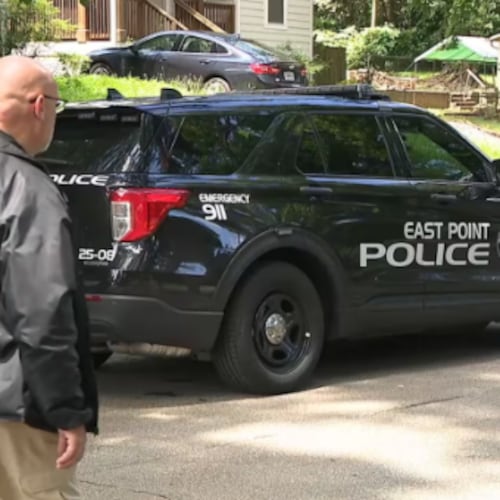Morris Brown, the first HBCU in Georgia founded by black people, has been open since 1881 but filed for bankruptcy in 2012 and currently has only 55 students enrolled. Below are some of the moments from the school’s history.
AJC INVESTIGATION: For more information about the problems many HBCUs face, the unique role they play in students’ lives, and the perils that lie ahead, check out the AJC’s special three-part series “HBCUs: A Threatened Heritage.”
1881 Founded by the Georgia Conference of the African Methodist Episcopal Church and named for one of its bishops. It is the first HBCU in Georgia that was founded by black people for black people.
1885 Opens doors to 107 students on a tract of land at Houston Street and Boulevard.
Credit: Library of Congress
Credit: Library of Congress
1894 Opens a theology department, which becomes the Turner Theological Seminary in 1900.
Credit: Library of Congress
Credit: Library of Congress
1908 Enrollment reaches more than 1,000.
1912 The college receives a state charter and becomes Morris Brown University.
1928 The school's rapid growth and financial practices force Morris Brown into bankruptcy.
1932 The seventh president, the Rev. W.A. Fountain, reorganizes the school substantially, leading it out of bankruptcy. Atlanta University has vacated its campus in West End, and Fountain persuades its trustees to let Morris Brown take over the campus.
Credit: Library of Congress
Credit: Library of Congress
1930s-40s Fountain hires numerous new faculty members and shores up the school's finances during his 22 years as president.
1940 Morris Brown is crowned Black College Football's National Champion. The school would build a powerful sports program throughout the decade and would win the same title in 1941 and 1951. In their last year of football, 2002, they finished 1-11.
Credit: COPY
Credit: COPY
1941 Morris Brown joins the Atlanta University Center, a consortium of the area's historically black colleges.
1950 The school dismisses Fountain amid allegations of financial improprieties and hires John H. Lewis, who modernizes science labs, expands the library and builds more dorm space for women students.
Credit: AP file
Credit: AP file
1965 The college embarks on another expansion, adding a student union building and new science and language departments.
1973 The school withdraws from the Atlanta University Center in protest of a reorganization by AUC. But the trustees ask to rejoin later that year.
1999 Morris Brown is on the brink of ruin, again. New president Dolores Cross inflates enrollment numbers to draw in millions of dollars in federal student aid. She diverts the money to expenses and to pay down Brown's enormous debt.
Credit: John Spink
Credit: John Spink
1999 Buoyed by a new $21 million stadium built for the 1996 Olympics, the school successfully petitions the NCAA to convert it from Division II to Division I. The Southwest Athletic Conference invites Morris Brown to join but then revokes its offer - even after Brown had scheduled games with several SWAC teams.
Credit: RICH ADDICKS
Credit: RICH ADDICKS
Credit: RICH ADDICKS
Credit: RICH ADDICKS
2002 Morris Brown's Marching Wolverines band is featured as the big-school rival in the film "Drumline." The real-life band played at the film's premiere.
2003 The Southern Association of Colleges and Schools revokes Morris Brown's accreditation because of the school's ballooning debt. Because the school is not accredited, students are not able to receive federal loans and enrollment begins to drop. As a result, Morris Brown is forced to withdraw from the AUC.
2004 Cross and her financial aid director, Parvesh Singh, are indicted on 34 counts of financial aid fraud. Singh is accused of collecting financial aid for students who were no longer enrolled at the school.
2006 Cross and Singh plead guilty to one count of embezzlement. Singh agrees to testify against his former boss in exchange for a reduced sentence.
Credit: Sony
Credit: Sony
2006 OutKast releases "Morris Brown," which features the school's Marching Wolverines band.
Credit: T. LEVETTE BAGWELL
Credit: T. LEVETTE BAGWELL
2007 Cross, 70, is sentenced to five years on probation, including a year of home confinement. Singh gets five years on probation, plus 18 months of home confinement. Both are ordered to pay restitution and fines.
2007 At its peak, Morris Brown enrolled 2,700 students. But the loss of accreditation has caused enrollment to plummet to 72 in the fall of this year. Only 10 faculty members remain, but Morris Brown continues to enroll and teach students.
2008 Water service is cut off to the campus because of unpaid bills.
Credit: Hyosub Shin
Credit: Hyosub Shin
2010 Stanley Pritchett Sr. becomes president of the college. Debt stands at $28 million.
2011 The college reaches a deal with the U.S. Department of Education to pay $500,000 on its debt of $9.4 million; the balance is forgiven.
2012 The college files for Chapter 11 bankruptcy and erases tens of millions of dollars in debt.
Credit: KENT D. JOHNSON / AJC
Credit: KENT D. JOHNSON / AJC
2015 Fire guts historic Gaines Hall, once a dormitory at Morris Brown but long since shuttered. Atlanta fire officials say the building, which went up in 1869 on the Atlanta University campus, should be torn down.
2017 Morris Brown continues to enroll students — about 55 in the fall of 2017.
Credit: BEN GRAY / AJC
Credit: BEN GRAY / AJC
Keep Reading
The Latest
Featured















